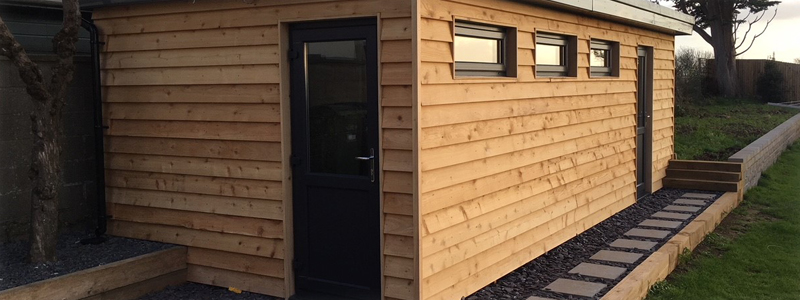Articles: What makes British Cedar Cladding So Popular?
Exterior cedar cladding is one of the most sought after products for cladding a structure. The British is a great value timber which looks superb when used on any structure you are looking to clad. Its knotty characterful appearance is a big draw when people are considering what species to go for. British Cedar Cladding is a light reddish brown and while there is some colour variation, as expected in any timber, it’s not as dramatic as in its Canadian counterpart.
It’s also great value for money and is one of the cheaper species you can buy because there are no import costs. British Cedar has a long lifespan (although it isn’t as durable as Oak) and can be machined or sawn to profile depending on what you need. T&G, shiplap and Rainshield are machined boards whereas feather edge and waney edge are rough sawn.
British Cedar is a stable fresh sawn timber which is why it can be machined without being kiln dried, this does mean though that you will need to treat your boards in order to help minify moisture movement.
You can either get sealant with or without UV protection, the UV protection will help to stop your timber from going silvery grey for longer. Whether you want to keep the colour or let the timber go silvery grey is up to you.

Where Is British Cedar Cladding sourced from?
We source our British Cedar Cladding from all over Britain from Grown in Britain accredited forests. Grown in Britain are an independent organisation who are working towards (and succeeding in) building a sustainable future for British forests and in turn British timbers.
We are proud members of the organisation because the conservation and management of British timbers is for the benefit of everyone. Not only will our forests be preserved but we will be able to carry on using these timbers on buildings around the country which is something we all want to see.







 Main Menu
Main Menu

